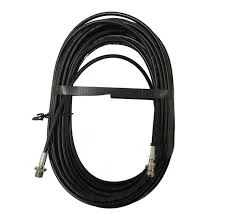Effective Solutions for Repairing Leaks in Car Air Conditioning Pipes
Car AC Pipe Leak Repair A Comprehensive Guide
When it comes to maintaining the comfort of your vehicle, a functional air conditioning (AC) system is crucial, especially during hot summer months. One of the many issues that can affect your car's AC is a leak in the AC pipe. Addressing this problem promptly is essential for ensuring optimal cooling performance and preventing further damage to the system. This article outlines the symptoms of an AC pipe leak, how to diagnose the issue, and steps to effectively repair it.
Recognizing the Symptoms
The first step in dealing with an AC pipe leak is identifying the symptoms. Common indicators include
1. Reduced Cooling Efficiency If you notice that your AC system is not blowing as cold as it used to, this could be a sign of a refrigerant leak. 2. Musty Odors A leak can result in moisture accumulation, leading to unpleasant smells inside the vehicle.
3. Hissing or Bubbling Sounds Unusual noises coming from the AC can indicate refrigerant escaping through a damaged pipe.
4. Visible Leaks Sometimes, you may notice refrigerant oil around the AC lines or puddles under the vehicle, especially when parked for extended periods.
By paying attention to these signs, you can catch issues early and avoid more extensive repairs
.Diagnosing the Issue
Once you suspect an AC pipe leak, the next step is diagnosis. It's advisable to take your vehicle to a certified mechanic, as they have the tools and expertise to perform a thorough inspection. However, if you prefer to DIY, here's a simple method
car ac pipe leak repair

1. Pressure Test Using a specialized AC pressure gauge, you can check the pressure levels within the system. A significantly low reading could indicate a leak.
2. UV Dye Test Some mechanics use UV dye to locate leaks. Adding dye to the refrigerant allows the technician to use a UV light to detect leaks, making them visible even if they are small.
3. Visual Inspection Examine the pipes and connections for cracks, signs of wear, or corrosion. Pay special attention to areas most exposed to heat or physical impacts.
Repairing the Leak
Once diagnosed, repairing an AC pipe leak can either involve a simple fix or the replacement of the pipe. Here’s a step-by-step guide for both scenarios
1. Minor Leaks If the leak is small and the pipe is in otherwise good condition, you can use an AC leak sealing kit. These kits work by injecting a sealant into the system that coats the insides of the pipe and seals small leaks.
2. Replacement For more significant leaks or if the pipe is severely damaged, replacement is necessary. - Purchase a Replacement Pipe Ensure you buy the correct part for your vehicle's make and model. - Disconnect the Battery Before starting any repairs, disconnect the car battery for safety. - Remove the Damaged Pipe Carefully detach the old pipe, taking note of how it connects to the system. - Install the New Pipe Connect the new pipe securely, ensuring all fittings are tight to prevent future leaks. - Recharge the AC System After installation, you'll need to recharge the AC system with the appropriate refrigerant.
Conclusion
Repairing a car AC pipe leak is an endeavor that requires attention to detail and a bit of mechanical know-how. By recognizing the symptoms early, diagnosing the issue, and taking the right steps, you can restore your vehicle’s comfort without breaking the bank. Regular maintenance and inspections can also help prevent leaks from occurring in the first place, ensuring your AC system remains in peak condition. Ultimately, understanding how to address AC pipe leaks empowers car owners to tackle this common automotive issue with confidence.
-
Ultimate Spiral Protection for Hoses & CablesNewsJun.26,2025
-
The Ultimate Quick-Connect Solutions for Every NeedNewsJun.26,2025
-
SAE J1401 Brake Hose: Reliable Choice for Safe BrakingNewsJun.26,2025
-
Reliable J2064 A/C Hoses for Real-World Cooling NeedsNewsJun.26,2025
-
Heavy-Duty Sewer Jetting Hoses Built to LastNewsJun.26,2025
-
Fix Power Steering Tube Leaks Fast – Durable & Affordable SolutionNewsJun.26,2025

